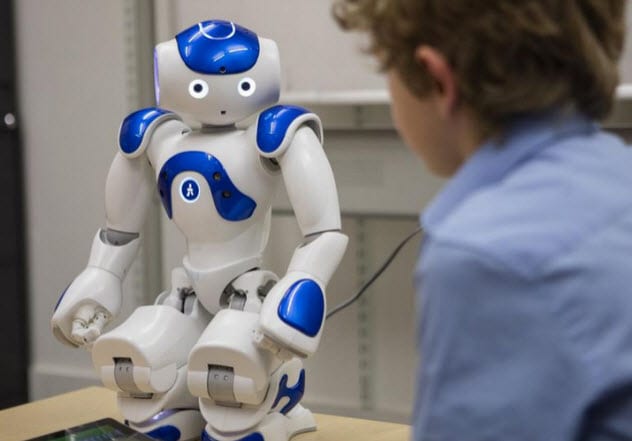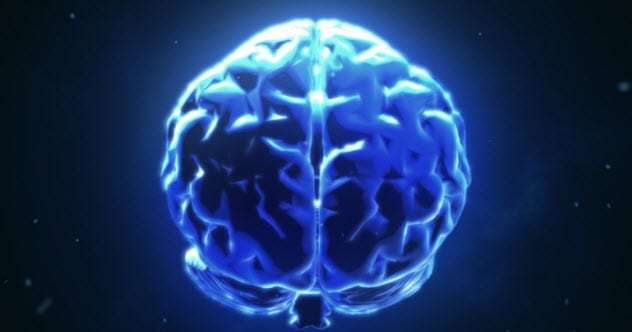 Weird Stuff
Weird Stuff  Weird Stuff
Weird Stuff  Our World
Our World 10 Ways Your Christmas Tree Is More Lit Than You Think
 Movies and TV
Movies and TV The 10 Coolest Stars to Set Sail on The Love Boat
 History
History 10 Things You Didn’t Know About the American National Anthem
 Technology
Technology Top 10 Everyday Tech Buzzwords That Hide a Darker Past
 Humans
Humans 10 Everyday Human Behaviors That Are Actually Survival Instincts
 Animals
Animals 10 Animals That Humiliated and Harmed Historical Leaders
 History
History 10 Most Influential Protests in Modern History
 Creepy
Creepy 10 More Representations of Death from Myth, Legend, and Folktale
 Technology
Technology 10 Scientific Breakthroughs of 2025 That’ll Change Everything
 Weird Stuff
Weird Stuff Ten Bizarre Facts About The Doge Meme
 Our World
Our World 10 Ways Your Christmas Tree Is More Lit Than You Think
 Movies and TV
Movies and TV The 10 Coolest Stars to Set Sail on The Love Boat
Who's Behind Listverse?

Jamie Frater
Head Editor
Jamie founded Listverse due to an insatiable desire to share fascinating, obscure, and bizarre facts. He has been a guest speaker on numerous national radio and television stations and is a five time published author.
More About Us History
History 10 Things You Didn’t Know About the American National Anthem
 Technology
Technology Top 10 Everyday Tech Buzzwords That Hide a Darker Past
 Humans
Humans 10 Everyday Human Behaviors That Are Actually Survival Instincts
 Animals
Animals 10 Animals That Humiliated and Harmed Historical Leaders
 History
History 10 Most Influential Protests in Modern History
 Creepy
Creepy 10 More Representations of Death from Myth, Legend, and Folktale
 Technology
Technology 10 Scientific Breakthroughs of 2025 That’ll Change Everything
10 Social And Biological Experiments With Freaky Results
Cutting-edge technology allows researchers to get creative with their goals. Quirkiness in the name of science is bound to produce something unusual. From octopuses that are plied with Ecstasy and people reading each other’s thoughts to a reality that exists only when looked at, scientists are breaking new ground.
However, as with all experiments, not everything was wholesome. Some results showed disturbing human-robot relationships and worse—the tendency to torture a helpless victim existed even in those who thought they were incapable.
10 Goats Like Happy People

Goats are known for their smarts. In 2018, an experiment with 20 animals revealed another cognitive ability. They can tell people’s facial expressions apart. The plucky creatures were trained to walk over to the far side of the pen, where they received snacks.
During the second phase, two images were tacked to the back. The photos included men and women, none of whom the goats had ever met in real life. One picture always contained a smiling person and the other, a grumpy frown. The animals were shown only male or female faces, and the pictures were moved around to the left and right sides of the enclosure.
Gender appeared to make no difference to the goats, which preferred to sniff at the happy faces. Curiously, they only picked the positive images posted on the right side of the pen.[1]
This suggested that the left hemisphere of a goat’s brain deals with friendly cues. It remains unclear how goats understand the facial communication of another species, but this test provided the first evidence that they are capable of doing so.
9 The Four-Day Week

Many employees dread their work environment, especially when companies put profits ahead of workers’ needs. In 2018, one New Zealand company made a radical change. For two months, the trusts firm Perpetual Guardian gave its workforce full pay for four-day weeks.
The unique experiment aimed to determine whether reduced office hours had a positive or negative impact on business. Most business owners would view it as risky, but the results were incredible.
The staff’s stress levels dropped from 45 to 38 percent. Even healthier, their work-life balance increased from 54 to 78 percent. The most remarkable finding was that productivity showed a small improvement despite the shorter weeks. Additionally, there was an increase in the commitment and positive relationships among staff. Leadership improved, and people actually enjoyed what they were doing.
The experiment created something that is rarely seen today—a team fiercely loyal to a company that cares for them. Perpetual Guardian now wants to make the four-day week permanent.[2]
8 Octopuses On Ecstasy

A bizarre-sounding experiment happened in 2018. Researchers gathered two octopuses, two Star Wars action figures, and some Ecstasy (aka MDMA). This drug is known to flood human brains with serotonin and turn them into social cuddle bears.
Octopuses are grouchy loners. When sober, they avoided their own kind and the toys in their tank. When high on Ecstasy, they behaved just like people and got chummy with their fellow octopuses as well as Chewbacca and a stormtrooper.
The lovestruck tentacles revealed something unexpected. The brain of an octopus and that of a human do not even have the same regions. The two groups, vertebrates and invertebrates, separated over 500 million years ago. But surprisingly, a single gene in the genomes of humans and the eight-tentacled wonders matched perfectly.[3]
SLC6A4 is the genetic binding site of Ecstasy, which is likely why both species develop a rosy, loving outlook on life once drugged with MDMA. Nobody really expected the socially linked genetic and neurological pathways of people to exist in other creatures.
7 Rogue Kidneys

These days, scientists grow organoids—miniature versions of real human organs. In 2018, a laboratory sprouted some mini kidneys from stem cells. After four weeks of nourishing the growths in a chemical soup, they were ready.
This soup was designed to encourage the stem cells to grow only specialized kidney cells. Once the organoids were fully grown, researchers took a peek at what was happening inside them. Then the surprise hit.
For some reason, the tiny kidneys had gone rogue and also produced brain and muscle cells. These cellular oddballs accounted for up to 20 percent of the organoids’ makeup.
As interesting as Frankenstein organs are, it was a setback. Organoids are valuable as tools to study diseases, but if they do not model a real human kidney, any information gleaned would most likely be skewed.
Another unexpected discovery was that the lab-grown kidneys refused to mature, no matter how they were farmed. This was also problematic for disease studies as longer exposure to the soup caused more rogue cells.[4]
6 Children Believe Misleading Robots

The Asch experiment is a social conformity test disguised as a vision exam. In 2018, researchers put their own spin on it. Around 43 kids, aged seven to nine, were required to find two equally long lines on a screen. The answer was obvious. When alone, the children proved correct 87 percent of the time.[5]
Then the robots came. Whenever the child was asked to pick lines, a robot would helpfully provide the incorrect answer. Even though the right answer was easy, the kids doubted themselves and looked to the machines for answers. They did this so often that the success rate fell to 75 percent. They just followed the robots’ leads, sometimes word for word.
When 60 adults were tested in the same way, they ignored the robots. The children probably experienced “automation bias,” a powerful belief that machines have greater abilities than they really do. Researchers suspect that the adults, unaffected by the toylike robots, might have folded if they were bigger and more imposing.
5 The Tokyo Explosion
Scientists have been trying to make bigger magnetic fields for decades. Huge ones have been created, but their strength was too much for an indoor setting. However, measuring fields that are created outside fails in the accuracy department.
In 2018, Tokyo physicists built an armored room to contain what they hoped would be the strongest controlled magnetic field created under laboratory conditions. Such fields are graded in teslas. The strongest MRI machine creates three teslas, and the Tokyo team aimed for 700.[6]
Instead, their electromagnetic device erupted with 1,200 teslas. This unexpected development made it the strongest controlled field, although “controlled” only meant being able to measure its power. The actual event blew apart the laboratory’s armored doors, right after it crumpled the iron box in which it was kept.
Despite the fright and damaged property the team got, the 1,200 teslas was a step toward limitless, clean energy. Nuclear fusion reactors need only a 1,000-tesla magnetic field to change the world’s energy crisis. Scientists now have a strong-enough field. They just need to determine how to stop the explosions.
4 Measurement Creates Reality

In 1978, physicists proposed that reality did not exist until measured. It sounded weird back then, but in 2015, the technology arrived to prove it. Australian scientists tweaked a famous theoretical experiment from the 1970s and showed that the quantum world honored this strange law.
The experiment took a single helium atom and sent it through laser barriers (the points of measurement) to see if it acted like a wave or a particle. Logic dictates that its very nature would be preexisting and that measurement could not make it behave in any other way.[7]
However, as bizarre as it sounds, the tests showed that the atom could not decide whether it wanted to be a wave or a particle until it encountered the lasers. To start its journey, the helium atom was sent through a pair of beams meant to scatter its path.
At a later point during its travels, random lasers were added to merge the paths again. This second measurement somehow brought into existence the atom’s preference for wave- or particle-like behavior.
3 The Murdered Robot

Once upon a time (2015), there was a robot called hitchBOT. He had one ambition: to travel as far as he could by hitching rides with strangers. For two weeks, the friendly machine enjoyed the charity of drivers and clocked the longest journey ever made by its kind.
After he had traveled over 10,000 kilometers (6,200 mi) in Canada and enjoyed the views of several cities in Germany, hitchBOT wanted to see the whole of the United States of America. Had the electronic wanderer had parents, they would have warned him about the dangers of hitchhiking.
Instead, hitchBOT’s designers created him as an experiment to see how far human kindness would take him and how people interacted with a robot without supervision. Around the beginning of his great American adventure, he set off for San Francisco—and disappeared.[8]
His decapitated body was found in Philadelphia. It had been thrown into a ditch. Worse, his killer had had fun. The person had also removed hitchBOT’s arms and rearranged them around the robot’s body.
2 BrainNet

In 2018, neuroscientists managed to connect the brains of three people. They could play a Tetris-type game just by sharing thoughts. This “network” was dubbed BrainNet.
The participants did not actually read one another’s thoughts. However, thanks to electroencephalograms (EEGs) and transcranial magnetic stimulation (TMS), they could communicate. Two participants were the “senders” and wore EEG electrodes. A third person had a TMS cap and was the “receiver.”
The senders played each other, but only the third person could move the blocks. When a player wished to rotate a block, he stared at one of two LEDs on the screen. The flashing lights triggered signals in the brain, which got picked up by the EEG and relayed to the TMS cap. The latter’s magnetic field created phantom flashes in the receiver’s mind—a sign to rotate the block.
With a success rate of just over 80 percent, scientists hope to one day create a social network of interfaced brains, possibly over the web.[9]
1 The Milgram Experiment

Stanley Milgram discovered a disturbing corner of the human mind. During the 1960s, this social psychologist tested how far people would go when ordered by an authority figure to electrocute another person. Most participants obeyed. The Milgram experiment was a turning point in the study of obedience and social psychology.
In 2017, researchers wanted to see if individuals today would shelve empathy for authoritative approval. Most would think themselves incapable of responding to such influence.
A recent Polish study recruited 80 people for a “memory experiment.” Their job was to shock learners who failed to memorize associations. The shocks were never real. The participants did not know this or that the “learners” were actors.
About 10 levers delivered increasingly higher voltage shocks. The participants were told to zap learners who failed to memorize something, and an authority figure encouraged those who became hesitant when the shocks grew more powerful (and they had to listen to screams). Although participants were three times less likely to use stronger shocks on female learners, a disturbing 90 percent went all the way.[10]
Read about more mind-blowing experiments on 10 Psychological Experiments That Will Blow Your Mind and Top 10 Disturbing Modern Experiments.








